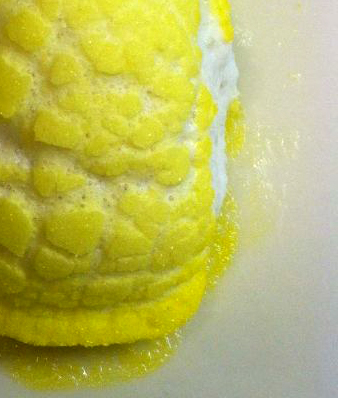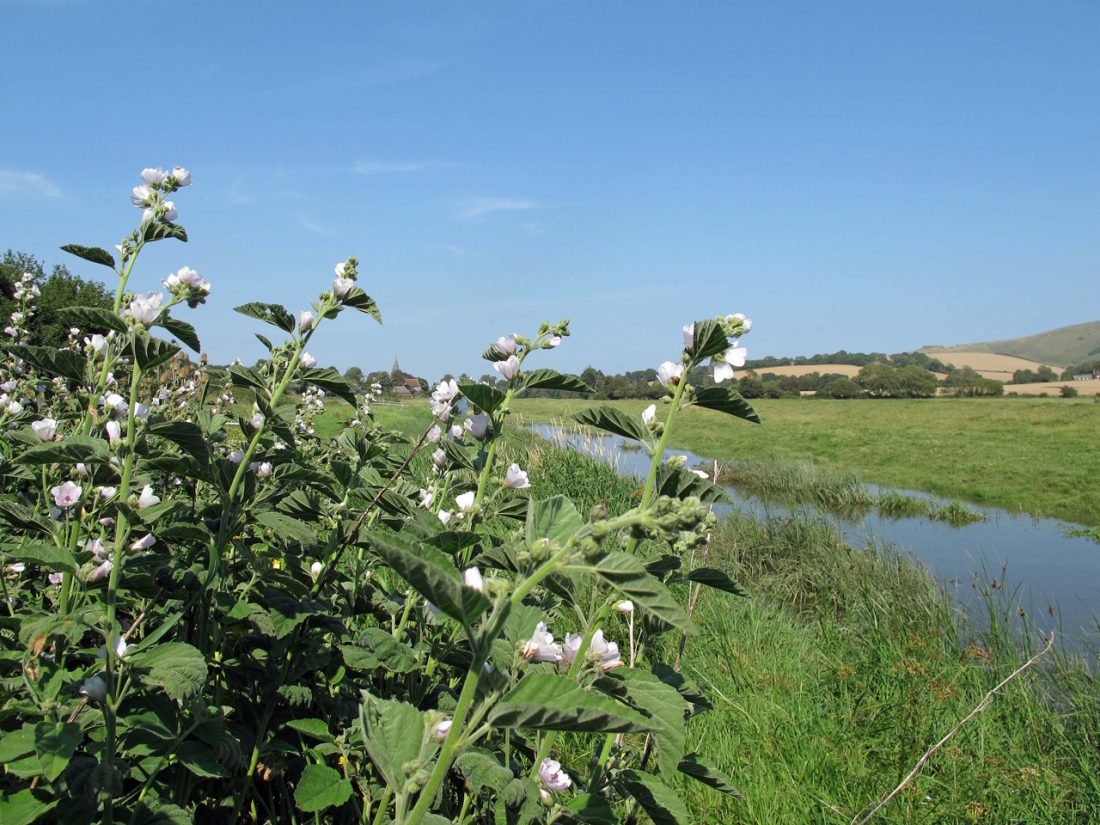From Swamp Flower to Nuking Peeps in the Microwave
We post in honor of National S’Mores Day!!
If you were to talk to a resident of Medieval times about Marshmallows, he would assume that you were referring to flowers of the Mallow (Malvaceae) family that grew in marshy areas. He might also be familiar with the plants’ use as a treatment for sore throats since the roots especially contain large amounts of mucilage. Marshmallow plants have been used as food and medicine since ancient times. In the 1800’s when sugar became more readily available French confectioners started whipping the sap with sweeteners to produce the original version of the marshmallow. Then, later in the 19th century someone thought to use egg whites instead of the more labor-intensive marshmallow sap, so the use of the plant declined though the name remained.
No one knows who decided that it was a good idea to burn marshmallows over a campfire but we like the way they think. The next big step in marshmallow history is the invention of S’mores. Mmmmmm, s’mores. The first time the recipe appeared in print was in 1927 in a Girl Scout hiking guide but they may have been around before the guide was printed. The combination of graham crackers, chocolate and marshmallows remains a perennial favorite.
The love of S’mores is producing some crazy variations in fact, but they all need marshmallows!

Pop Culture has given us the bachelor version of S’mores. If the bachelor sandwich is any sandwich eaten standing over the sink then bachelor S’mores are cooked in the microwave. We remember one bachelorette that used to stare as the plate in the microwave revolved intoning “zzzzaaaappp, zzzzaaaappp, zzzzaaappp” but then there wasn’t much to watch on TV. We do have to warn you from personal experience that:
- not all chocolates melt that well in the microwave
- graham crackers will get hard if over zapped and
- marshmallows do have a point of no return.
The possible explosion of marshmallows when cooked in the microwave is caused by the expansion of air incorporated into them when they were manufactured. As marshmallows age they dehydrate becoming “stale” and slightly crunchy. According to Just Born, manufacturers of Peeps, 25%-30% of customers prefer their Peeps stale. Zapping Peeps will return them to a less stale state, albeit a little worse for wear.
So otherwise, why nuke your marshmallows or Peeps, you ask? Because you can!

Did you know you can get Peeps all year long from Amazon? Just an FYI…





Marianne Lee
March 29, 2021at7:11 pmIf you do the traditional roasting of a peep over a flame, the outer sugar coating becomes like the crust of a creme brulee. On a side note, I was once having this discussion with a co-worker when another very vegan co-worker overheard — but only the part about roasting peeps! and assumed it was the soft and fluffy breathing kind! though she would not have eaten the marshmallow version thanks to the gelatin content — her opinion of me suffered far less once she realized that I was NOT skewering cute little baby chicks.
Judy Coleman
March 30, 2021at5:50 pmSo great to get a comment that is not trying to sell me something! This is a great example of how something becomes part of pop culture. Everyone roasts their marshmallow their own way but most people did get to roast them one way or another. I didn’t hear about nuking Peeps until long after my childhood S’mores days were over.
I worry that some kids may never experience a real campfire and make S’mores or just roast marshmallows where the first step is to find the right stick. I take S’mores makings to our yearly family reunion where the children use store bought S’mores sticks and roast their marshmallows over a charcoal flame in the park’s grill. It loses something in the translation. Maybe I’ll take some Peeps for them to try roasting. Thanks for the idea.
Best wishes